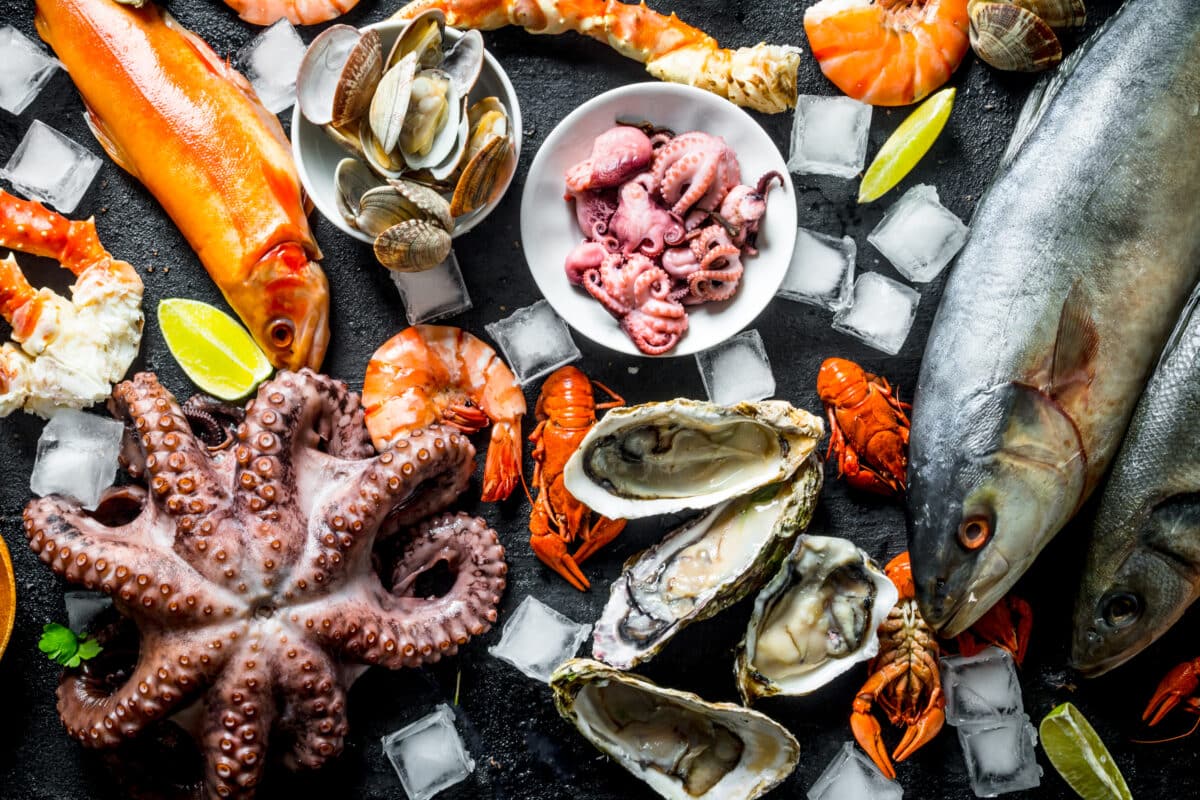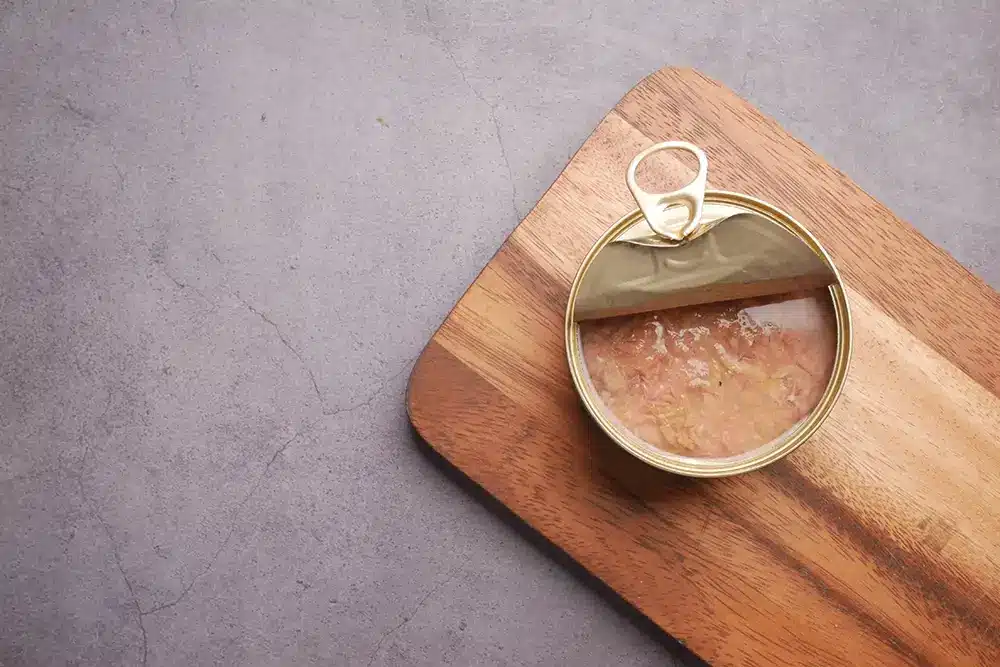Table of Contents
Let’s talk about fish. An excellent source of protein, omega-3 fatty acids and essential nutrients such as iodine, selenium, calcium and vitamins A and D. However, in this day and age talking about fish also means talking about mercury. And not only in species such as swordfish or bluefin tuna. It has also been found in shellfish such as shrimp, clams, and other smaller fish such as hake, sardines and salmon, albeit in much lower quantities.
Which Fish Contain Mercury?
Health authorities maintain that fish consumption is safe, although they make recommendations on the consumption of certain species to control the impact of mercury, one of the most studied heavy metals for its toxicity due to its presence in the food chain and bioaccumulation.
Species with high mercury content
- Swordfish
- Bluefin tuna (Thunnus thynnus)
- Shark (dogfish, shortfin mako, spiny dogfish, dogfish and blue shark)

Species with low mercury content
- Herring
- Cod
- Cockles
- Mackerel
- Squid
- Shrimp
- Crab
- Haddock
- Herring
- Hake
- Trout
- Anchovies
- Sardines
- Scallop
- Oyster
- Squid

Why do fish contain mercury?
Mercury is a naturally occuring element (earth’s crust, volcanic activity, mineral weathering, etc.) but is also released into nature from industrial activities. Methylmercury is considered to be the most toxic form of this heavy metal and accounts for approximately 90% of the total mercury analysed in fish and shellfish.
This form of mercury is already present in seas and rivers in various concentrations and reaches us via food. Fish containing mercury is one of the most common forms of mercury entering our bodies.
What are the health risks of methylmercury
According to WHO, mercury is toxic to “the nervous and immune systems, the digestive system, the skin and the lungs, kidneys and eyes”. It is considered a neurotoxicant capable of crossing the placenta, hence the strict control measures and recommendations on ingesting fish containing mercury in more vulnerable population groups such as pregnant women, nursing mothers and young children (up to the age of 10).
How to protect ourselves: Strategies to minimise YOUR impact:
- Washing and peeling fruit and vegetables: helps to reduce the presence of heavy metal residues on the surface.
- Choosing sustainably sourced food: such products tend to have lower levels of contaminants.
- Variety in diet: Eating a wide variety of foods can help reduce exposure to a specific type of heavy metal, as different foods have different contamination profiles.
- Water filtration: Safe water filtration systems can help reduce the presence of heavy metals in drinking water.
- Natural detox supplements: some foods and supplements, such as coriander, garlic, ginger and spirulina, have been associated with detoxifying the body and can help remove heavy metals from the body.
They are known as natural heavy metal chelators. At Hifas da Terra we have carried out a study to evaluate the detoxifying capacity of two specific strains of mushroom: Maitake (Grifola frondosa T1178-Grifolumib®) and Polyporus (Polyporus umbellatus T16669), both present in our 100% pure mushroom-based supplements.

Supplements
HIFAS-Detox is a premium quality supplement produced by Hifas da Terra, experts in the development of mushroom-based food supplements.
Thanks to our specialisation and research, we are pioneers in the development of supplements using Reishi, Lion’s Mane, Maitake and Polyporus, among others. We analyse each species by selecting strains based on their biochemical composition, select the most suitable culture medium and obtain extracts with high concentrations of biomolecules of interest to offer them in capsules.
HIFAS-Detox is the Maitake and Polyporus-based supplement containing only β-(1-3),(1-6) D-glucans and α-glucans, triterpenoids, ergothioneine, ergosterol (precursor of vitamin D2). It also contains natural vitamin C (Malpighia glabra) to improve the bioavailability of the extracts and thus enhance their action.
Mercury in Food
Concern about mercury in fish and its toxicity dates back to 1968, when a chemical industry spilt mercury into Minamata Bay (Japan). 4 years later, an international risk assessment of mercury intake was carried out by FAO/WHO experts.
Recommendations from the health authorities
The relevant authorities: the European Food Safety Authority (EFSA) establish guidelines and recommendations on the intake of fish containing mercury:

Does canned tuna contain mercury?
One of the most widely consumed canned fish in our latitude is tuna. Species such as Thunnus albacares (yellowfin) Katsuwonus pelamis (skipjack); Thunnus alalunga (albacore)
Mercury-containing fish in Spain, Italy, France and Greece
For its part, the European Authority has observed higher levels of mercury exposure in countries such as Spain, Italy, France and Greece. Within Spain, the Mediterranean coast was found to be more vulnerable. In this regard, a recent study in the Journal: Nutrients analysed the levels of mercury in fish in the Valencian region.
In both adults and children, this study shows a tolerable weekly intake higher than that established by EFSA. This is the mercury content of the species analysed in this study:
- swordfish: 0,80 mg/kg
- fresh tuna (0,46 mg/kg
- canned tuna (0.25 mg/kg)
Based on these data and taking into account the EFSA limits shown in the table below, the mercury content of canned tuna is relatively low. Hence, some experts recommend limited consumption of canned tuna. This is also true for other foods with medium and low levels, as repeated consumption increases exposure to the metal and its accumulation in the body.

Maximum permitted mercury levels
The AESAN lists the maximum limits for mercury in food currently in force for the whole of the EU as follows:
- 1,00 mg/kg: anglerfish, northern dogfish, bonito, eel, eel, king mackerel, cabezudo, halibut, Cape pout, marlin, megrim, mullet, red mullet, Chilean pout, pike, tarpon, capelin, skate, skate, ray, redfish, sailfish, redfish, gilt-head bream, shark, escolar, sturgeon, swordfish and tuna.
- 0,50 mg/kg: other fish and fishery products.
- 0,10 mg/kg: food supplements.
Summary: eating fish safely and protecting ourselves from mercury in fish
The presence of heavy metals in our food is a serious challenge. But with awareness and action, we can take steps to reduce our exposure. By adopting practical strategies we can contribute to a safer and healthier food environment for all.
Fish containing mercury: Useful links
If you want to know more about the legislation that applies to heavy metals:
- Regulation 1881/2006 reflects maximum levels for certain contaminants in food.
European Food Safety Authority (EFSA) Risk Assessments:
- 2015.- Report comparing the benefits of fish consumption and the risks of exposure to methylmercury.
- 2014 – Scientific opinion on the health benefits of seafood consumption in relation to the health risks associated with methylmercury exposure.
- 2012.- Scientific opinion on public health risks related to the presence of mercury and methylmercury in food.
- 2004 – Opinion on mercury and methylmercury in foods
Other sources and references

Linoleic Acid: Why This Essential Omega-6 Is Vital for Your Health
☑️ Linoleic acid is a polyunsaturated omega-6 fatty acid essential for human health, as the body cannot synthesise it and must obtain it through diet. This fatty acid plays several critical roles, including supporting skin integrity, contributing to the formation of cell membranes, and serving as a precursor to important bioactive compounds. Its anti-inflammatory properties and role in maintaining the skin barrier make it particularly beneficial for skin health. Understanding the importance of linoleic acid and ensuring adequate intake can significantly impact overall well-being.

Are all red mushrooms toxic?
Red mushrooms are often perceived as toxic, but sometimes other properties are also recognised. Let’s discover them together in this post.
